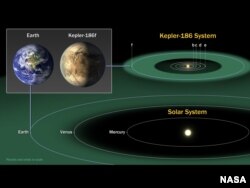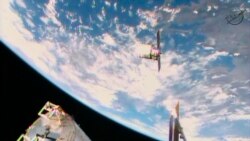NASA scientists say they are closer than ever to finding life beyond Earth.
Several leading NASA scientists spoke to a gathering July 14th at NASA headquarters in Washington, D.C. The scientists discussed the space agency’s plan to find life in outer space.
NASA continues to look for life in the solar system. That search is centered mostly on Mars and the icy moons of Jupiter and Saturn. But the scientists mainly discussed the search for life outside the solar system.
NASA Administrator Charles Bolden opened the talk. He said it is not probable that humans are alone in what he calls “the limitless vastness of the universe."
The scientists spoke about improvements in search equipment. They noted the Kepler Space Telescope. They said the tool had been critical in expanding knowledge about exoplanets.
An exoplanet is a planet that orbits a star outside the solar system. Kepler has discovered most of the 5,000 possible exoplanets, of which almost two thousand have been confirmed.
An Earth-size exoplanet orbits what is called, the “habitable zone” of a star. The habitable zone is an area which could support liquid water on the exoplanet. Liquid water is considered essential for life as we know it.
Kepler research has led scientists to believe that there may be billions of planets in the galaxy.
Sara Seager is a professor of planetary science and physics at the Massachusetts Institute of Technology in Cambridge, Massachusetts. She says space scientists think it is “very likely that every single star in the Milky Way galaxy has at least one planet.”
Another major step toward discovery is the planned launch of three new telescopes. Officials expect to deploy the equipment starting in 2017.
These telescopes will help scientists to learn if an exoplanet has atmospheric water vapor or carbon dioxide.
Ms. Seager says these three telescopes will give scientists the ability to find life on other planets. But she adds they will also need luck. It is a very big universe.
During the discussion, the group of scientists took questions from the public. One person asked if the United States government would tell the public of a discovery of life outside of Earth.
NASA's chief scientist Ellen Stofan answered, “Of course we would.”
I’m Anna Matteo.
This report was adapted into Learning English by Anna Matteo from a VOA News story.






